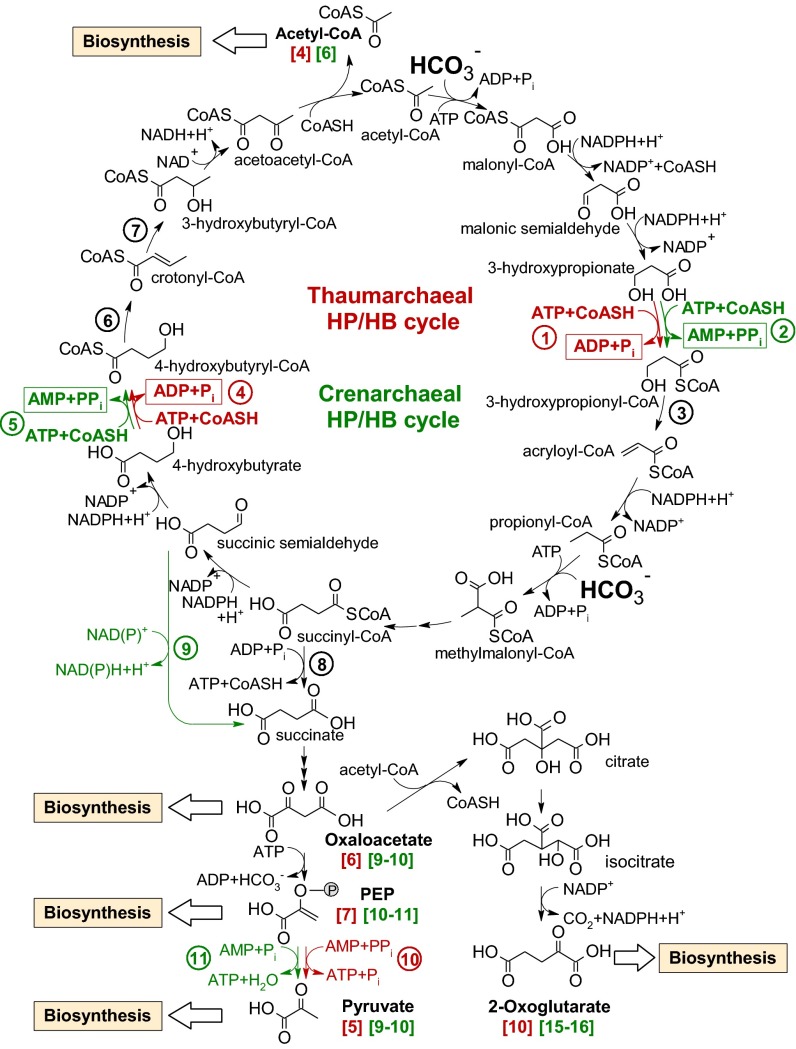Fig. 1.
Reactions of the crenarchaeal and thaumarchaeal variants of the HP/HB cycle (modified from ref. 19). The reactions determining energy efficiency of the crenarchaeal (M. sedula) cycle are shown in green, and those for the N. maritimus variant are shown in red. Reactions common to both are shown in black. Note that although the two pathways have similar reactions and intermediates, they are significantly different in energy efficiency (Table 4) and evolved independently in Crenarchaeota and Thaumarchaeota (see text). The numbers in square brackets represent moles of high-energy anhydride bonds of ATP required to form 1 mol of the corresponding central precursor metabolites (see also Table 4). Enzymes as numbered in circles are 1, 3-hydroxypropionyl-CoA synthetase (ADP-forming); 2, 3-hydroxypropionyl-CoA synthetase (AMP-forming); 3, 3-hydroxypropionyl-CoA dehydratase; 4, 4-hydroxybutyryl-CoA synthetase (ADP-forming); 5, 4-hydroxybutyryl-CoA synthetase (AMP-forming); 6, 4-hydroxybutyryl-CoA dehydratase; 7, crotonyl-CoA hydratase; 8, succinyl-CoA synthetase (ADP-forming); 9, succinic semialdehyde dehydrogenase; 10, pyruvate-phosphate dikinase; and 11, pyruvate-water dikinase.

